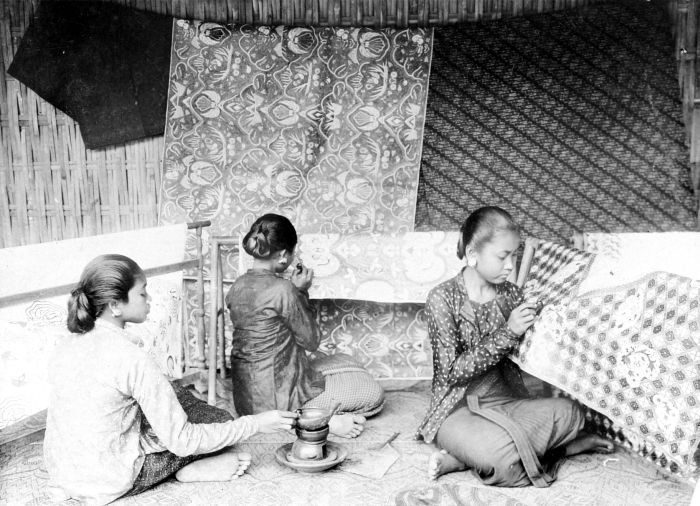Tuesday, May 28, 2013
Pulau Merah
A hundred and twenty five participants from twenty countries joined Banyuwangi International Surfing Competition held by the regional government of Banyuwangi, East Java on Friday, May 24.
The competition was initiated by the head of Sub Disctrict, Abdullah Azwar by releasing hatchlings at Pulau Merah beach and was opened by the Minister of Youths and Sports, Roy Suryo at 1 p.m. yesterday.
Hundreds of students and local residents gathered at the beach to watch the release at 07.30 a.m. After releasing the hatchlings, the surfers started to try out the waves of Pulau Merah, located about eighty kilometer south of Banyuwangi.
The foreign participants are from Japan, New Zealand, USA, Australia and other European countries. "The international event is to introduce Pulau Merah as a tourist destination in Banyuwangi," Abdullah Azwar said.
en.tempo.co
Tuesday, May 21, 2013
Toba Lake
Coordinates 2.6845°N 98.8756°ECoordinates: 2.6845°N 98.8756°E
Type Volcanic/ tectonic
Primary outflows Asahan River
Max. length 100 km (62 mi)
Max. width 30 km (19 mi)
Surface area 1,130 km2 (440 sq mi)
Max. depth 505 m (1,657 ft)[1]
Water volume 240 km3 (58 cu mi)
Surface elevation 905 m (2,969 ft)
Islands Samosir
Lake Toba (Indonesian: Danau Toba) is a lake and supervolcano. The lake is 100 kilometres long, 30 kilometres wide, and up to 505 metres (1,666 ft) deep. Located in the middle of the northern part of the Indonesian island of Sumatra with a surface elevation of about 900 metres (2,953 ft), the lake stretches from 2.88°N 98.52°E to 2.35°N 99.1°E. It is the largest lake in Indonesia and the largest volcanic lake in the world.
Lake Toba is the site of a massive supervolcanic eruption estimated at VEI 8 that occurred 69,000 to 77,000 years ago, representing a climate-changing event. It is the largest known explosive eruption on Earth in the last 25 million years.
According to the Toba catastrophe theory, it had global consequences for human populations: it killed most humans living at that time and is believed to have created a population bottleneck in central east Africa and India, which affects the genetic make up of the human world-wide population to the present.
This hypothesis is not widely accepted because evidence is lacking for a decline or extinction of other animals, including species that are sensitive to changes in the environment.[6] It has been accepted that the eruption of Toba led to a volcanic winter with a worldwide decrease in temperature between 3 to 5 °C (5 to 9 °F), and up to 15 °C (27 °F) in higher latitudes.
Thursday, May 16, 2013
Bali
Bali is a province of Indonesia. The province covers a few small neighbouring islands as well as the isle of Bali. The main island is located in the westernmost end of the Lesser Sunda Islands, lying between Java to the west and Lombok to the east. It is one of the country's 34 provinces with the provincial capital at Denpasar towards the south of the island.
With a population recorded as 3,891,428 in the 2010 census, and currently 4.22 million, the island is home to most of Indonesia's Hindu minority. In the 2000 census about 92.29% of Bali's population adhered to Balinese Hinduism while most of the remainder follow Islam.
It is also the largest tourist destination in the country and is renowned for its highly developed arts, including traditional and modern dance, sculpture, painting, leather, metalworking, and music. A tourist haven for decades, Bali has seen a further surge in tourist numbers in recent years.
Source : wikipedia.org
Wednesday, May 15, 2013
Batik
Batik (/ˈbætɪk/ or /bəˈtiːk/; Javanese pronunciation: [ˈbateʔ]; Indonesian: [ˈbatɪk]) is a cloth that is traditionally made using a manual wax-resist dyeing technique.

Javanese traditional batik, especially from Yogyakarta and Surakarta, has notable meanings rooted to the Javanese conceptualization of the universe. Traditional colours include indigo, dark brown, and white, which represent the three major Hindu Gods (Brahmā, Vishnu, and Śiva). This is related to the fact that natural dyes are most commonly available in indigo and brown. Certain patterns can only be worn by nobility; traditionally, wider stripes or wavy lines of greater width indicated higher rank.
Consequently, during Javanese ceremonies, one could determine the royal lineage of a person by the cloth he or she was wearing.

Other regions of Indonesia have their own unique patterns that normally take themes from everyday lives, incorporating patterns such as flowers, nature, animals, folklore or people.
The colours of pesisir batik, from the coastal cities of northern Java, is especially vibrant, and it absorbs influence from the Javanese, Arab, Chinese and Dutch cultures. In the colonial times pesisir batik was a favourite of the Peranakan Chinese, Dutch and Eurasians.

UNESCO designated Indonesian batik as a Masterpiece of Oral and Intangible Heritage of Humanity on October 2, 2009. As part of the acknowledgment, UNESCO insisted that Indonesia preserve their heritage.
Source : wikipedia.org
Subscribe to:
Posts (Atom)
Related Posts
-
Kalasan (Indonesian: Candi Kalasan, Javanese: Candhi Kalasan), also known as Candi Kalibening, is an 8th-century Buddhist temple in Java, In...
-
Mendut is a ninth-century Buddhist temple, located in Mendut village, Mungkid sub-district, Magelang Regency, Central Java, Indonesia. The ...
-
The orangutans are the two exclusively Asian species of extant great apes. Native to Indonesia and Malaysia, orangutans are currently fou...
-
Batik (/ˈbætɪk/ or /bəˈtiːk/; Javanese pronunciation: [ˈbateʔ]; Indonesian: [ˈbatɪk]) is a cloth that is traditionally made using a ma...
-
VILLAGE in Mount Pocoroko Wae Rebo, Manggarai, Flores, East Nusa Tenggara blessed Award of Excellence from the United Nations Educational...






